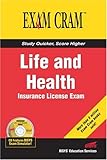The whole point of health insurance is to pay for the accumulating cost of exams, diagnostics, and treatments of any particular issue you may have. There are several coverage options when it comes to what kind of health care plan you have or want. Try to pick a plan that best meets you needs and budget, this will help you save money. Also, don’t feel dumb if you have no clue what your agent says. You can ask them what things mean if you don’t know. You are better able to understand what you are covered for than be surprised when you get the bill. It is better to know what is available to you in health benefits on all fronts. Become familiar with the types of plans available and know their specific advantages and disadvantages so you can best determine what works for you.
TYPES OF POLICIES:
●Indemnity Policies (Traditional Fee-for-Service Insurance)
●Preferred Provider Organizations (PPOs)
●Health Maintenance Organizations (HMOs or Managed Care)
●Self-Insured Health Plans (Single Employer Self-Insured Plans)
●Multiple Employer Welfare Arrangements (MEWAs)
HEALTH INSURANCE TERMS:
●Assignment of Benefits: Your signed authorization to give your doctor or hospital (medical provider) direct payment to them for your medical treatment. This means you do not see the money and don’t have to pay at the time of service more than your co-pay.
●Business Day: Every day that insurance companies are open for business, which excludes Saturday, Sunday, and state and federal holidays. These tend to be from Monday to Friday from 8-9 AM to 4-5 PM their local time.
●Calendar Day: Every day of the calendar month, which includes Saturday, Sunday, and state and federal holidays. If something happens on a Saturday, Sunday, or holiday you will be able to call in a claim but it will not be recorded till the next business day.
●Certificate of Coverage: The document you get that tells you that you are a member of the group and hold a policy.
●Certificate of Creditable Coverage: A written statement from your previous insurance company and/or health plan stating the length of time you were covered with them.
●Claim: A notification to your insurance company that payment is due under the policy provisions.
●Co-payment - The portion of charges you pay to your provider for covered health care services in addition to any deductible.
●Coverage: The actual details of protection provided by an insurance contract.
●Denial: An insurance company’s decision to withhold a claim payment or demand a preauthorization. A denial may be made because the medical service is not covered, not medically necessary, or experimental or investigational.
●Deductible: A set amount of money paid by the insured for medical costs before benefits kick in and pay.
●Exclusions and/or Limitations: Conditions or circumstances spelled out in an insurance policy that limit or exclude coverage benefits. It is important to read all exclusion, limitation, and reduction clauses in your health insurance policy or certificate of coverage to determine which expenses are not covered.
●Experimental and/or Investigational Medical Services: A drug, device, procedure, treatment plan, or other therapy, which is currently not within the accepted standards of medical care. These items are more than likely not covered.
●Grace Period: A specified period immediately following the premium due date during which a payment can be made to continue a policy without interruption. This applies only to Life and Health policies. Check your policy to be sure that a grace period is offered and how many days, if any, are allowed.
●Independent Medical Review: A process where expert medical professionals who have no relationship to your health insurance company or health plan review specific medical decisions made by the insurance company.
●Medically Necessary: A drug, device, procedure, treatment, or other therapy that is covered under your health insurance policy and that your doctor, hospital, or provider has determined essential for your medical well-being, specific illness, or underlying condition.
●Policy: The written contract between an individual or group policyholder and an insurance company. The policy outlines the duties, obligations, and responsibilities of both the policyholder and the insurance company. A policy may include any application, endorsement, certificate, or any other document that can describe, limit, or exclude coverage benefits under the policy.

